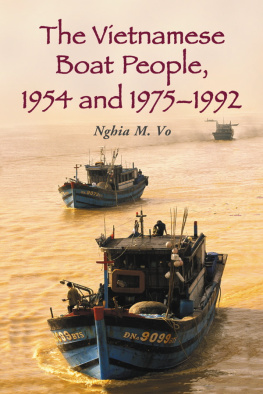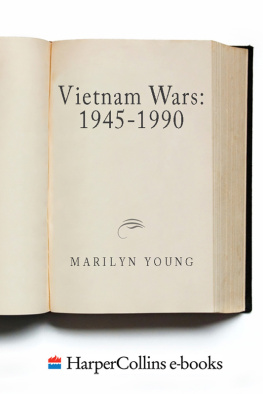Routledge Research Guides to American Military Studies
America and World War I
David R. Woodward
The War of 1812
John Grodzinski
The United States in the Vietnam War, 19541975
Louis A. Peake
THE UNITED STATES IN THE VIETNAM WAR, 19541975
A Selected Annotated Bibliography of English-Language Sources
Louis A. Peake

NEW YORK AND LONDON
First published 2008
by Routledge
270 Madison Ave, New York, NY 10016
Simultaneously published in the UK
by Routledge
2 Park Square, Milton Park, Abingdon, Oxon OX14 4RN
Routledge is an imprint of the Taylor & Francis Group, an informa business
This edition published in the Taylor & Francis e-Library, 2007.
To purchase your own copy of this or any of Taylor & Francis or Routledges collection of thousands of eBooks please go to www.eBookstore.tandf.co.uk.
2008 Taylor & Francis
All rights reserved. No part of this book may be reprinted or reproduced or utilized in any form or by any electronic, mechanical, or other means, now known or hereafter invented, including photocopying and recording, or in any information storage or retrieval system, without permission in writing from the publishers.
Trademark Notice: Product or corporate names may be trademarks or registered trademarks, and are used only for identification and explanation without intent to infringe.
Library of Congress Cataloging in Publication Data
A catalog record has been requested for this book
ISBN 13: 978-1-135-90679-5 ePub ISBN
ISBN 10: 0-415-95770-2 (hbk)
ISBN 10: 0-203-93544-6 (ebk)
ISBN 13: 978-0-415-95770-0 (hbk)
ISBN 13: 978-0-203-93544-6 (ebk)
To my wife, Linda, who shared in this endeavor; to my son, Ethan, who learned from my research; and to the thousands of Americans who fought and died in the Vietnam War.
Acknowledgments
With the rewrite of this work not as many individuals assisted as with the original work. Moreover, much more time was spent conducting research via the Web and not so much actual physical time spent in libraries, depositories, and various archives. Still, however, I wish to extend selected thanks to those who provided assistance and direction in the preparation and research of this edition.
I am extremely grateful and indebted to Brendan ONeill and to the Routledge, Taylor & Francis Group for encouraging me to update and revise this work which was originally published in 1986. During the 20 years which have passed since the original date of publication I had not anticipated in doing a revision until Mr. ONeill contacted me.
I wish to offer my sincere thanks and appreciation to the staff of the John Deaver Drinko Library, at Marshall University, who offered unselfish assistance and guidance in directing me to the correct source locations for works published since 1986.
Without access to this invaluable resource I most surely would have been greatly delayed in completing this work.
Finally, I wish to thank my wife Linda, and my son Ethan, who offered encouragement and patience as I diligently researched and rewrote this work. They very graciously excused me from other activities in which I would have surely participated had I not been working on this project.
Introduction
The United States war in Vietnam ended some 30 plus years ago. It was a war that ended in disaster for the United States and a complete triumph for the Communists.
Americas military intervention in Vietnam resulted in being our longest (to date), most costly, and most divisive war in our history. At one point over a half-million U.S. forces were deployed across Southeast Asia with contingents from other Free World Forces.
From 1954 (you could actually use the end of the Second World War in 1945) to 1975, Vietnam dominated five presidential administrations and plagued the American conscience. When the French colonial empire in Indochina collapsed, with their bitter defeat at Dien Bien Phu, the United States took up the gauntlet. Without giving heed to any of the lessons that could have been learned from the French experience the United States made the fateful decision to intervene and, consequently, repeated many of the same mistakes.
What happened? Using the 1954 date the United States embarked upon a road that kept it embroiled in Southeast Asia for 21 years. Not only did we have to fight in Vietnam, but the war eventually moved into the neighboring countries of Cambodia, Laos, and Thailand. Over time, at least seven other countries allied with the United States, sent in military forces while many other countries provided non-combat support.
What were the results? A military defeat for the United States, international criticism of American foreign and military policy and the conduct of the war, a crisis of conscience within the American political system, and, finally, a tearing apart of the domestic fabric of this nation which time has only recently begun to heal.
That the war in Vietnam was a costly tragedy for the United States is a gross understatement. The more than 1,621 entries that comprise this revised edition of this select, annotated bibliography pay testimony to that. I have chosen to neither attack or defend the issues. As in my previous work I am merely attempting to provide the user with selected, complete, concise, and factual interpretations of a large cross-section of the body of scholarship and other materials pertinent to Americas involvement in the Vietnam War and in Southeast Asia.
Again, this is a select bibliography. It is certainly not the largest or, perhaps, the most complete of those bibliographies available. However, many of those bibliographies are without annotation. Consequently, due to constraints placed on this work by the publisher, I have purposely limited the number of entries in this work. I have deleted entries that were dated and added many new entries from the wealth of material which has been published since 1986.
Those entries which I have chosen to include are those most frequently cited by other historians, scholars, and students of the war. All of the entries, with a few exceptions, are English-language sources. Furthermore, this bibliography is intended for a broad audience. The user of this work will find entries of interest to the general reader, the military buff, the collector of militaria, and the juvenile reader.
There are entries concerning specific military, political, and domestic topics relevant to the war. I have chosen to also include material about the music, films, art, and humor which evolved from the war. The user will find a chronology of Americas involvement from 1954 to 1975, a glossary of acronyms, abbreviations, and terms, and a list of the principal characters.
Like the first edition of this work the simplified format allows for future revision and further additions. Certainly, there have been omissions especially in regards to foreign-language sources, obscure journals, and specific military branch/unit histories. Yet I feel that the strength of this bibliography lies in the attempted objectivity of the selected entries.













